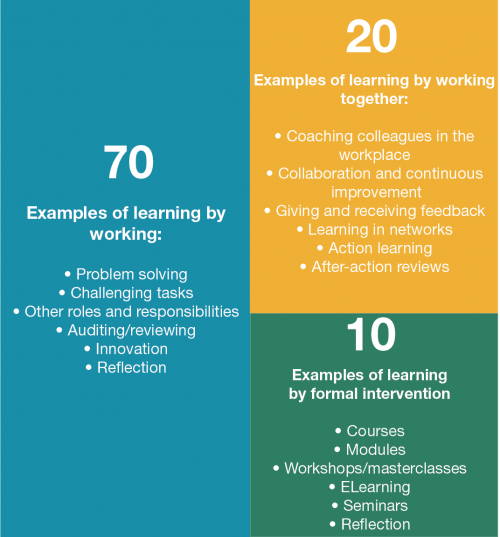Many organizations have a Learning and Development function. Developing a training function not only helps centralize employee training and development, but also supports an organization’s commitment to employee development. Increasingly, organizations that invest in and structure their approach to L&D have more engaged employees, enhanced knowledge and skills and fulfilment of key business needs.
Here are some of the key strategies for setting up learning and development organisation success:
1. Achieve Strategic Alignment on Company Mission, Vision and Goals
Creating and maintaining strategic alignment between the learning and development function and the overall mission, vision and goals of the organization is the single most important responsibility of L&D leaders. No matter how much effort is put into developing cutting-edge, technology-driven learning solutions, the training will be useless unless it is aligned with the needs of the organization. There are four basic steps that when followed and repeated on a regular basis, will ensure strong strategic alignment between the training organization and the business as a whole:
– Understand the business’ mission, vision, strategy and goals.
– Determine where and how learning will impact the achievement of business goals.
– Document the learning and development plan with key business stakeholders in mind.
– Validate the alignment of the learning and development plan with the business plan
2. Deploy a learning and development infrastructure
A successful L&D function relies on a foundational infrastructure that supports ongoing development, management and delivery of training programs and curriculums. Your infrastructure should address the establishment of an organizational design and the policies and procedures needed to manage the L&D function. It should also include the creation of a catalog of all training courses and well-defined learning paths for each role and level. Define processes for how training courses will be updated and maintained as well as how new training will be developed and/or acquired in order to stay aligned with the evolving needs of the organization and its employees.
3. Develop a Competency Framework
A competency framework is a map of the most critical competencies required for success in any job throughout the organization. Each competency is defined and broken down into observable behaviors, which can then be separated by function, specialty, or level of responsibility. It acts as an organization-wide playbook that is used to address needed skills and behaviors for corporate success, and it ensures the skills and behaviors you are providing training for support and reinforce the corporate culture you desire. The benefits of developing a competency framework for setting up learning and development organisation success include:
– It assists in the design of various HR systems (e.g., selection, training, performance appraisals) to help achieve a common business objective.
– It provides consistency across the organization with respect to performance management.
– It can be used as a tool to help employees identify development opportunities against an established standard
– It allows for targeted training and development plans by measuring gaps and identifying areas for skill development.
| Leadership Pipeline: Six Career Passages: | Competencies: |
|
Behavioral: Specific traits that every employee is expected to demonstrate during their employment with the company.
Functional: Job specific competencies within specific job functions. |
Ensuring you are equipped with this information early on in the development of any initiative allows you to adequately address and fulfill competency gaps. This competency framework is also a valuable tool in providing employees with a more complete understanding of the skills and abilities required to advance their careers, which are also the behaviors needed to drive your desired culture and provide greater value to the organization.
4. Conduct a Training Needs Analysis
A training needs assessment identifies individuals’ current level of competency, skills or knowledge in one or more areas and compares that competency level to the required competency standard established for their positions or other positions within the organization. The difference between the current and required competencies can help determine training needs. Rather than assume that all employees need training or even the same training, management can make informed decisions about the best ways to address competency gaps among individual employees, specific job categories or groups/teams.
Assessments can be conducted at any time but are often done after hiring, during performance reviews, when performance improvement is needed, for career development plans, for succession planning, or when changes in an organization also involve making necessary changes to employees’ jobs. It is beneficial to perform these assessments periodically to determine the training needs of an organization, employees’ knowledge and skills, and also training program effectiveness. Here are the steps:
i. Identify the Business Need:
Here are some of the key questions:
• Why is the organization conducting a training needs assessment?
• What is the end result that the employee, manager or executive team is trying to accomplish?
• Will training contribute to this accomplishment?
ii. Perform a Gap Analysis:
Performing a gap analysis involves assessing the current state of a department’s or employee’s performance or skills and comparing this to the desired level. The difference between the existing state and the desired state is the gap. Some gap analysis assessment tools are the following:
• HR records
• Individual interviews
• Focus groups
• Surveys, questionnaires and self-assessments
• Observations
iii. Assess Training Options:
The gap analysis generates a list of training options and needs. Now the list can be assessed based on the goals and priorities of the organization, both currently and in the future. A scale of 1 to 3 could be used with number 1 being critical, 2 being important and 3 being not important at all. Here are factors to consider when determining if training is a viable option.
• Solution to a skill issue
• Cost of training
• Return on Investment
• Legal Compliance
• Time
• Remaining Competitive
After all the training needs/options have been assessed, the HR professional will have a list of training priorities for individual employees, departments or the organization as a whole.
iv. Report Training Needs and Recommend Training Plans:
The next step is to report the findings from the training needs assessment, and make recommendations for short- and long-term training plans and budgets, starting with the most critical priorities from the training option list. The report should include a summary of why and how the assessment was completed, the methods used and people involved, and the training recommendations with a general timeline.
Considerations for the report and recommended training plans include:
• What training is already being offered, and should it continue to be offered?
• Will the training be conducted in-house or externally?
• Does it make sense to bring in a trainer to train several employees on the same subject matter, rather than send everyone to an off-site training?
• Does the company have the subject matter expertise within HR, the training department or another department to conduct the training?
• Can and should the training be conducted online?
• What is the learning style of the participants?
• Are all participants at one location or multiple locations, or are they decentralized?
5. Design & Develop Training Materials
While you’re designing and developing your materials, keep the following points in mind:
• Remember that it’s important to design before you rush into development
• Always focus primarily on the learning needs of your employees, and not on what’s easy for your trainers
• Only create training content and assessments that relate directly to your learning objectives
• Remember the adult learning principles
• Include as much hands-on practice or simulation as possible: people learn by doing
• Try to use a “blended learning” approach that includes training in several different formats (computer-based, instructor-led, etc.).
• Use the 70-20-10 Model for Learning & Development. The 70-20-10 Model for Learning and Development is a commonly used formula within the training profession to describe the optimal sources of learning by successful managers. It holds that individuals obtain 70 percent of their knowledge from job-related experiences, 20 percent from interactions with others, and 10 percent from formal educational events.
Source: https://702010institute.com/702010-model/

6. Promote the Training Programs for learning and development organisation success
Here are some of the ways to promote training for setting up learning and development organisation success:
• Connect with internal communications team to promote upcoming training courses.
• Design training catalogues with descriptions of courses for each group, facilitators, etc.
• Use existing communication mediums.
• Create a shared calendar that shows future trainings.
• Use creative posters, digital signage and hub TVs in common spaces.
7. Implement the Training
Here are some key elements to implement a successful training.
• Use an LMS system for assigning, delivering, tracking, and reporting on training.
• Logistics for the program, training room/webinar arrangements, hard/ soft copies of training materials and other supplies, training vendor arrangements, guest speakers, travel etc.
• E-learning courses assigned, pre and post work
• Assessments, certificates and OJT arrangements
8. Gather Data with a Measurement Strategy
Given that training initiatives often come with their share of highs and lows, you will want to collect data from the very beginning so you can see the short-term and long- term impact of training. With a focus on tracking and measuring employee learning progress and behavior change, you will develop a better sense of the return on the investment. It’s the measurable ROI that separates a decent training program from a highly effective one, and by measuring progress on key metrics relevant to your organization, you’ll develop a better sense of where training is working and where more extensive training is needed.
9. Develop and Implement a Practical Reinforcement Strategy
A thoughtful and effective learning retention strategy ensures you are maximizing training impact and minimizing the opportunity for learning decay. Ongoing post-course reinforcement keeps lessons from training top of mind and ensures that employees remember and apply what they learned once back on the job. To keep employees engaged and focused on ongoing development, it is necessary to organize reinforcement activities as easily digestible lessons, full of practical takeaways that can be applied at work. Some examples of reinforcement activities and options for learning and development organisation success include:
• Line Manager Reinforcement: Direct supervisors’ model, coach, and require new behaviors among employees.
• Mobile Reinforcement: Learning content, questions, and feedback from training are delivered to employees’ smartphones or tablets.
• Knowledge Reinforcement: Using gamification, participants play short games that test their knowledge of content and reinforce its relevance to their job. Elements of gamification include leaderboards, ROI reporting, rewards, and an interactive learner experience.
• Content Reinforcement: Using various media formats, employees are reminded of training content and have the opportunity to look more closely at its relevance to their own work environment.
10. Partner with SimuRise
Maximizing the success of training initiatives takes more than selecting a training course and waiting for employees to begin behaving differently. It requires thorough preparation, the support of company leaders, and a trusted training partner who can guide you through the discovery process, training delivery, and ongoing learning reinforcement. At SimuRise, we understand how to design and deliver training programs that change employees’ hearts and minds, resulting in lasting behavior change. We have helped organizations of every size and industry achieve results in leadership development, culture transformation, and a range of skills including teamwork, communication, collaboration, entrepreneurial thinking, problem-solving, and more. Contact us today to learn how we can help you build and implement successful training initiatives.




